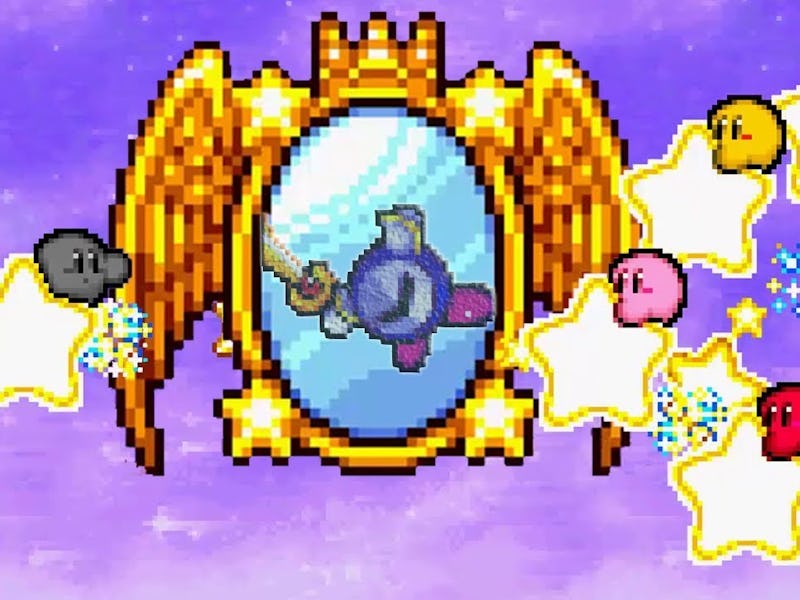20 Years Later, Kirby’s Still Got It
Kirby and the Amazing Mirror doesn’t reinvent the classic formula, but it does find ways to improve it.

Over the past three decades, Kirby games have changed very little. The eldritch horror learned to float and copy enemy abilities in the early ‘90s and has been riding high on that warp star since, becoming one of Nintendo’s most cherished and plush-like mascots. Though there have been a few underrated deviations like Kirby’s Pinball Land and Kirby Air Ride, most of the 39 (!) titles follow that simple flying and sucking formula.
Kirby and the Amazing Mirror is no different. It takes that classic gameplay loop and adds just enough new gameplay to make it one of the best platformers in Nintendo’s library. Released on April 15, 2004 in Japan (it came to America that October) for the Game Boy Advance, Amazing Mirror was one of the first games I ever truly got sucked into. Just like the stoic masked Meta Knight, who starts the game off getting pulled into a magic mirror by his dark doppelganger, you too will get enamored with this genre bending title. Splitting that mirror into eight pieces, he then sets his sights on the pink protagonist, splitting him into four different variations.
Kirby and the Amazing Mirror is about as close to an open world game as a side-scrolling platformer can be.
The main gimmick and selling point are these four Kirby clones, which can be controlled by up to four players in co-op mode. But if you don’t have any desire to play with friends — or in my case, no GBA link cable — the other Kirbies can still come in handy. While out exploring the world, you can call on them with a cellphone, instantly teleporting them to your location. For most of the game, calling them really isn’t needed or worth it, though. Every level can be handled solo and their early 2000s AI can sometimes cause more harm than good, ruining puzzles you were about to solve. But certain end-game boss fights become impossible to defeat without your posse.
Though it gets less real estate on the back of the box, Kirby and the Amazing Mirror is about as close to an open world game as a side-scrolling platformer can be. The levels include the expected, like a forest and underwater, while others create a much more unique vibe like a haunted mansion or a mountain made of mustard.
In the hub world, there are eight different mirrors to unlock that each have two more mirrors inside them that you can visit. Most of these mirrors are intertwined through levels, allowing you to travel through a vest network of connected zones to go almost anywhere.
There’s a constant need to backtrack, but it doesn’t feel nearly as egregious as other platformers.
Littered throughout treasure chests in levels are collectible music notes and spray paints that require exploration to find. There can be a hidden door behind a tree or a puzzle that can only be solved by a certain ability. There’s a constant need to backtrack, but it doesn’t feel nearly as egregious as other platformers, skipping the need to hop into an over map just to find that one missing coin.
Outside of that, Kirby and the Amazing Mirror features amazing bosses, fun mini-games, and an ending you won’t see coming. It’s a game that can sometimes get lost in the massive mountain of Kirby content, but it deserves more love. Thankfully, you don’t need to buy an overpriced copy on the second-hand market if you want to play since it was added to the Nintendo Switch Online last year with some helpful new features. (Being able to rewind your game at a moment’s notice after losing an important ability, check out a copy of the manual to cheat at certain boss fights, or use the online function to play multiplayer without a cable, makes the experience objectively better.)
So give this Kirby a chance and get ready to relive a game that’s sure to awaken your inner child.